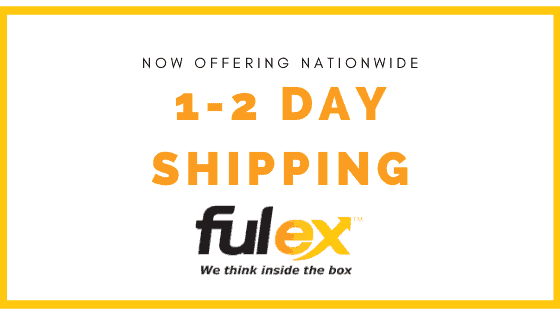As the global pandemic continues to evolve, online sales continue to thrive, growing 76 percent in June. But the success didn’t come without order fulfillment strategies.
Traditional brick and mortar purchases have significantly shifted to online amid the COVID-19 health crisis and quarantine conditions with social distancing guidelines. Born initially of convenience, filling up the virtual shopping cart has become a mainstay as an alternative to in-store shopping.
While many business owners began jumping on the e-commerce bandwagon in January to capitalize on a booming market, some are just beginning to make the switch.
Ill-prepared to deal with such a force of nature, some were forced to close up shop completely, while others are still reeling from the hit. A few were able to survive by quickly adjusting their marketing strategy. But all were interrupted in some way, shape of form.
Here are a few order fulfillment strategies for a COVID-19 market to help you stay ahead of the competition, maintain profitability and customer satisfaction.
OFFER FASTER SHIPPING:
A perk of ordering online these days is 1-2 day shipping. In other words, nearly instant gratification. But this only works if you set it up properly.
Manufacturing and distribution centers that are overseas and away from the bulk of their customer base suffered hugely this year from delayed shipping. That’s because products already manufactured may be waiting to be shipped due to sanitation issues, outbreak hotspots and employees falling ill or being quarantined due to the virus.
In some urban areas, populations that are more dense are struggling significantly with sufficient social distancing, which in turn weakens their workforce and slows the e-commerce process.
In general, shipping delays and associated issues are one of the biggest reasons contributing to income loss.
DIVERSIFY YOUR DISTRIBUTION CENTERS:
If the majority of your customers are buying locally, why not keep your suppliers nearby? While overseas manufacturing and production can be attractive price-wise, it proves more difficult to keep track of inventory. What’s more, many more unforeseen issues can arise that ultimately affect your bottom line.
- Network to find trusted experts within your city, region or state.Look for those with long-term professional relationships within the same or similar industry.
- Research local order fulfillment centers with best practices for warehousing, inventory and distribution models.As the virus continues to spread you may want to consider moving some inventory to areas less affected by COVID-19 or look for alternative 3PLs.
- Travel bans could prevent product inspection and overseas production management, while manufacturing in other locations may be waiting on raw materials where shipments were slowed or stopped.
BE PREPARED:
Shortages of materials and products could increase the cost of inventory making doing the cost of business more expensive and cause bidding wars. Staying on top of inventory needs is crucial during this unpredictable time. Experiencing “stock outs” on certain platforms such as Amazon could result in penalties against the inventory performance index such as the removal of product search options and associated sales data.
- Try to anticipate what’s to come. Online retailers and fulfillment centers can experience labor issues at any time, but the potential for quarantine or illness from the coronavirus is a real and prevalent threat.
- Prioritize sales channels by profitability and loyalty. Doing this protects your future customer base when supply chain issues eventually level out and shipping becomes more normalized.
- Develop incentives and backorder processes until you’re able to restock.
- If you have an IT team have them organize equipment and tools and streamline processes for working remotely to ensure system access from anywhere.
PRIORITIZE CUSTOMER SERVICE:
When you’re running an online brand, providing a great customer service experience is vital in order to retain high-value customers and retain new ones. Especially now, while the market is vulnerable to opportunity, focus on engaging with your customers up front, during and post interaction.
- Consider placing repeat customers first in line to receive orders as a means to protect your case after the health crisis ends.
- Community delays, shortages and backorder plans in your product descriptions to customers.
- Don’t price gouge. Passing the buck is not an authentic solution to meet your bottom line and it won’t secure loyal customers. Get creative.
DID YOU KNOW?
- 95 %of shoppers will tell others about their negative customer services experience.
- 52% of consumers reveal that positive customer service interactions were the reason they made additional purchases.
- Companies with a robust and seamless omnichannel approach to customer service retain 89% of their customers.
CONSIDER A THIRD PARTY LOGISTICS PROVIDER:
3PLs as they’re known in the e-commerce industry can save a business, small or large money, resources and time. Acting as a one-stop-shop, these fulfillment centers are a great option for startups, established businesses and companies already thriving within their market.
E-commerce fulfillment centers can help with maintaining your inventory so you can continue fulfilling orders in the face of COVID-19 and with little to no interruption.
When paired with the right 3PL, a seamless process of picking, packing and shipping can grow your business into what you’ve always dreamed.
Wherever you’re at in your e-commerce journey, Fulex is ready to work with you.


